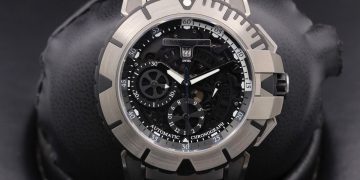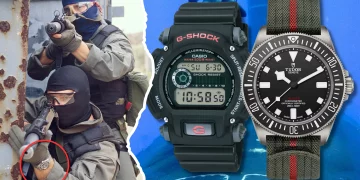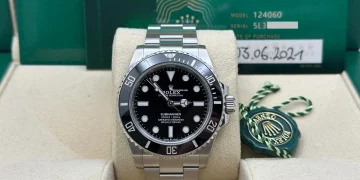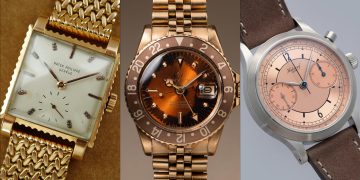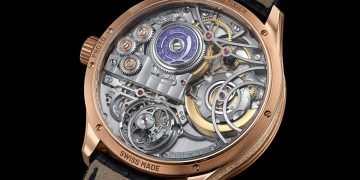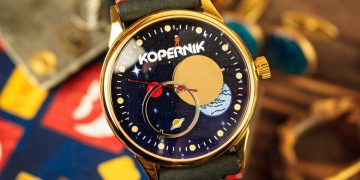In 2024, the luxury landscape is shifting in ways that challenge long-standing ideals of symmetry, perfection, and classical beauty. The emergent trend of ‘Chaos Luxury’ celebrates disorder, asymmetry, and the allure of imperfection as forms of self-expression and cultural commentary. At the forefront of this movement is the Cartier Crash watch, a timepiece whose famously distorted and surreal design has become an iconic emblem of controlled chaos and refined rebellion.
This article explores the rise of the Cartier Crash within this cultural phenomenon, analyzing how TikTok’s viral “destroy watch challenge” intersects with the watch’s brand value, why its imperfect design triggers deep psychological responses related to desire and possession, and what risks investors face in distinguishing between hype-driven reissues and genuine vintage originals.
The Subcultural Phenomenon: TikTok’s “Destroy Watch Challenge” and Brand Value
Social media platforms like TikTok have become powerful forces shaping modern consumer culture — especially among younger generations who prize authenticity, individuality, and disruptive aesthetics. One viral trend that has captured significant attention is the “destroy watch challenge,” where users intentionally scratch, bend, or otherwise damage luxury watches, including the Cartier Crash, while sharing their experiences and transformations with millions of viewers.
At first glance, this trend appears paradoxical: why would anyone want to harm a high-value watch? The answer lies in the deeper cultural undercurrents driving this movement. The Crash’s very identity as a “broken by design” watch — its asymmetrical, warped case originally inspired by a car crash — makes it the perfect symbol and canvas for this challenge.
The “destroy watch challenge” serves multiple intertwined purposes:
- Rejection of Perfection: Younger consumers increasingly reject traditional luxury’s immaculate, polished ideals, seeking instead to celebrate imperfection and transient beauty.
- Identity and Social Capital: Modifying or “breaking” a luxury watch becomes a performative act that builds social capital and signals participation in niche subcultures.
- Amplification of Brand Narrative: Far from diminishing Cartier’s reputation, these viral acts draw renewed attention and hype around the Crash watch, enhancing its desirability and mystique.
This phenomenon highlights how 21st-century luxury is defined as much by story, disruption, and cultural resonance as by material perfection. The Cartier Crash’s warped form makes it a living symbol of this new paradigm.
Psychological Analysis: How Imperfect Design Fuels Desire and Possession
Why does the Cartier Crash’s seemingly chaotic design inspire such fascination and possessiveness? The answer is rooted in complex psychological dynamics around imperfection, identity, and control.
The Crash watch disrupts the classical notion that luxury objects must be symmetrical, flawless, and orderly. Instead, its intentional distortion challenges visual expectations and invites a more emotional, subjective response. Psychologically, imperfect objects often evoke:
- The ‘Wabi-Sabi’ Effect: A Japanese aesthetic concept valuing beauty in imperfection, transience, and authenticity. The Crash embodies this principle, attracting those who see value in objects that “tell a story” beyond clinical perfection.
- Increased Possessiveness: Studies suggest people feel stronger attachment to unique, imperfect items because they signal individuality and exclusivity — qualities highly prized in luxury consumption. The Crash’s singular shape makes owners feel they possess something no one else has quite the same way.
- Rebellion and Identity Assertion: Wearing a watch that defies norms becomes a statement of personal identity and resistance against conformity. It’s less about telling time and more about signaling an attitude.
This psychological interplay helps explain why the Crash is a compelling symbol within the Chaos Luxury trend. Its imperfect design is not a flaw but a feature that fuels desire and emotional ownership.
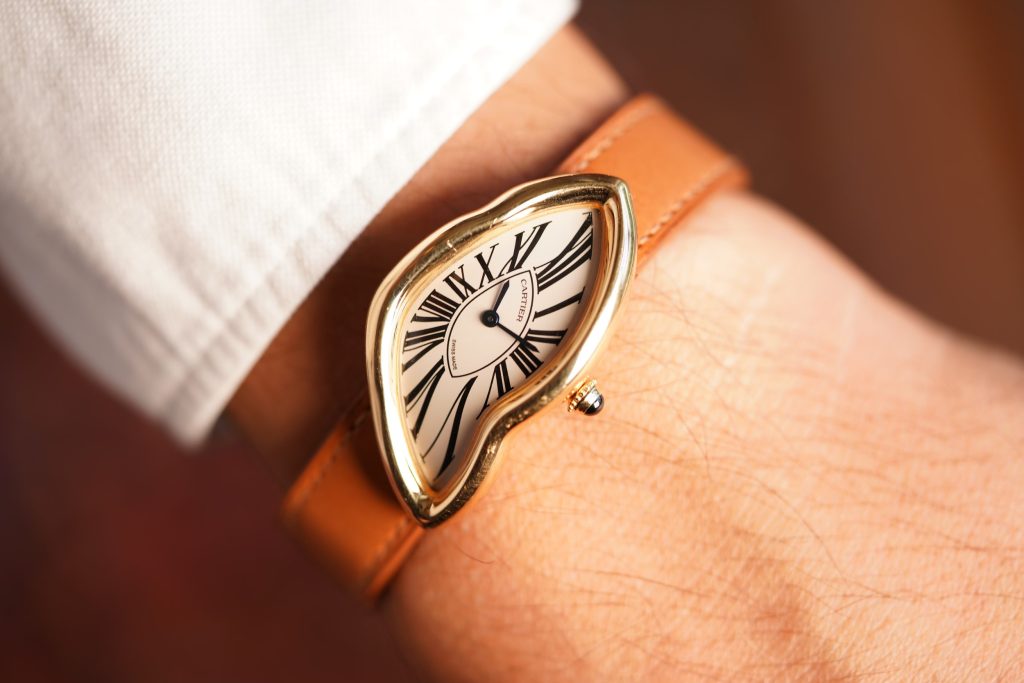
Investment Risks: Hype Models vs. Genuine Vintage Originals
The rising popularity and cultural cachet of the Cartier Crash have inevitably created a heated market. However, this surge brings with it significant investment risks, particularly the challenge of distinguishing between highly hyped recent releases and authentic vintage pieces coveted by collectors.
- Hyped Reissues: Cartier has released limited editions and reinterpretations of the Crash watch in recent years, often accompanied by heavy marketing and social media buzz. While visually appealing and collectible, these versions may not yet hold the same long-term value as vintage originals. Their prices can be inflated by hype cycles rather than intrinsic rarity.
- Authentic Vintage Originals: First introduced in the 1960s and inspired by a legendary story of a crashed watch, vintage Crash watches are rare and historically significant. These pieces have provenance, patina, and a mystique that reissues cannot fully replicate, making them prized among seasoned collectors.
- Counterfeit and Replica Risks: The demand surge has unfortunately led to a rise in counterfeit or unauthorized reproductions, which can fool inexperienced buyers and erode market confidence.
- Market Volatility: The Crash’s association with volatile social media trends means its investment value may fluctuate wildly depending on shifting tastes and cultural relevance.
For investors, thorough due diligence, provenance verification, and expert consultation are essential to navigate the complex Crash watch market. Distinguishing genuine vintage gems from hype-driven models can be the difference between a rewarding acquisition and a costly misstep.
What the Cartier Crash Means for the Future of Luxury
The Cartier Crash watch’s elevation to symbol status within 2024’s Chaos Luxury trend signals a broader transformation in how luxury is conceived, consumed, and celebrated. No longer is pristine perfection the only path to desirability. Instead, luxury embraces narratives of imperfection, rebellion, and cultural dialogue.
For brands, this means innovating not just in craftsmanship but in storytelling and cultural engagement. For consumers, it means valuing uniqueness, emotional connection, and identity signaling as much as technical features or materials.
Ultimately, the Crash’s success shows that the future of luxury lies in complexity, contradiction, and controlled chaos — a far cry from the clean, symmetrical ideals of the past.
Conclusion
Cartier Crash watches perfectly encapsulate the spirit of 2024’s Chaos Luxury trend through their distorted design and cultural resonance. TikTok’s “destroy watch challenge” phenomenon has propelled the Crash into a new realm of brand visibility and subcultural significance, while psychological factors explain the deep emotional attachment to this imperfect icon. Yet, for investors and collectors, the market’s volatility and the rise of hype-driven models require careful navigation.
As luxury continues to evolve toward embracing imperfection and narrative richness, the Cartier Crash stands as a compelling symbol of what it means to own not just a watch, but a piece of contemporary cultural expression.



